Not forced to leave, some Kalapana-area residents choosing to stay until ordered otherwise
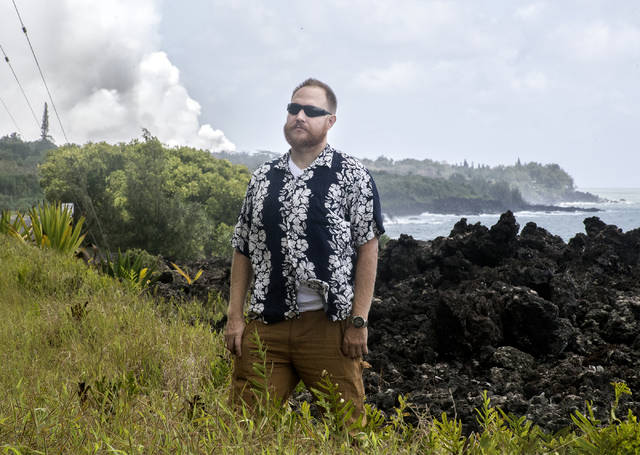
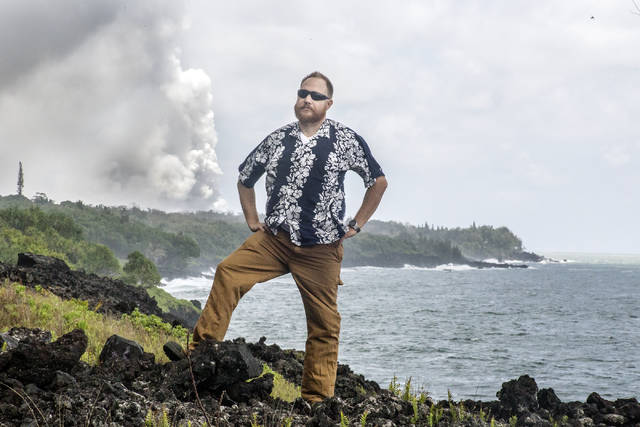
Aaron Mitchell, a Lanipuna Gardens evacuee, stands in front of a view of the ocean entry plume Friday near Kalapana Seaview. (Photo by HOLLYN JOHNSON/Tribune-Herald)
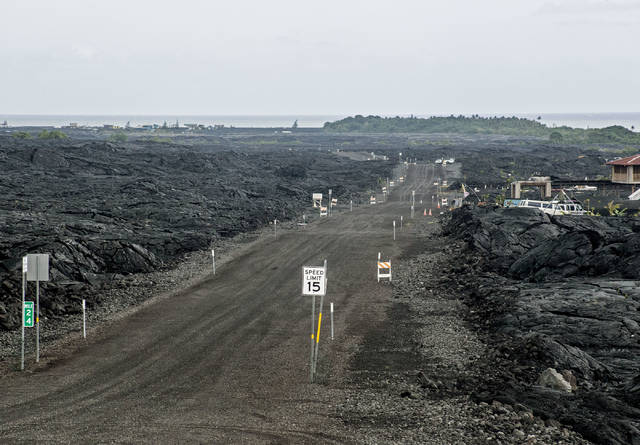
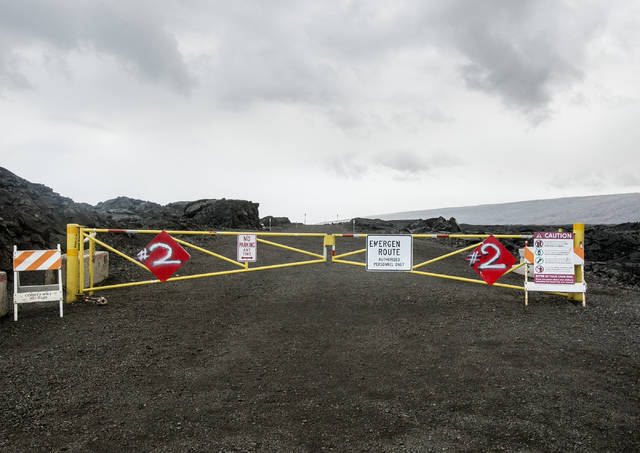
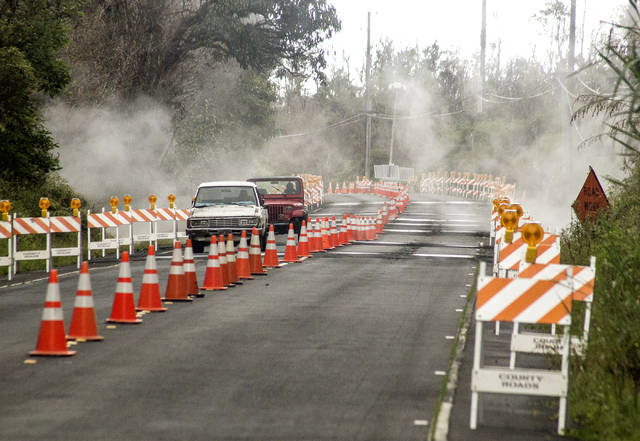
Vehicles drive over steel plates that cover seismic cracks Friday on Highway 130 between Leilani Estates and Kalapana.
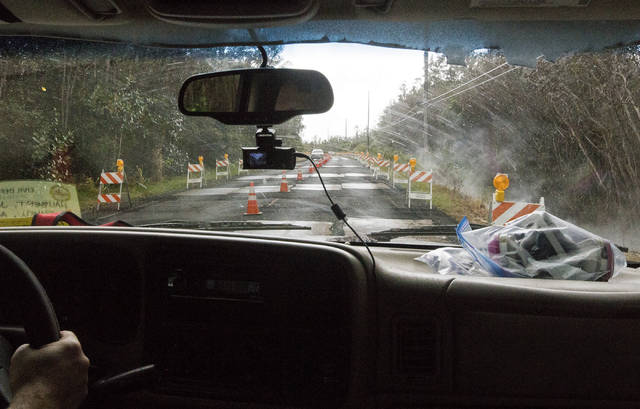
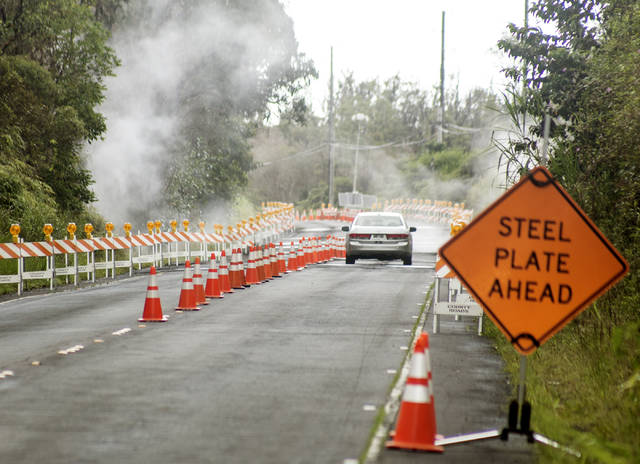
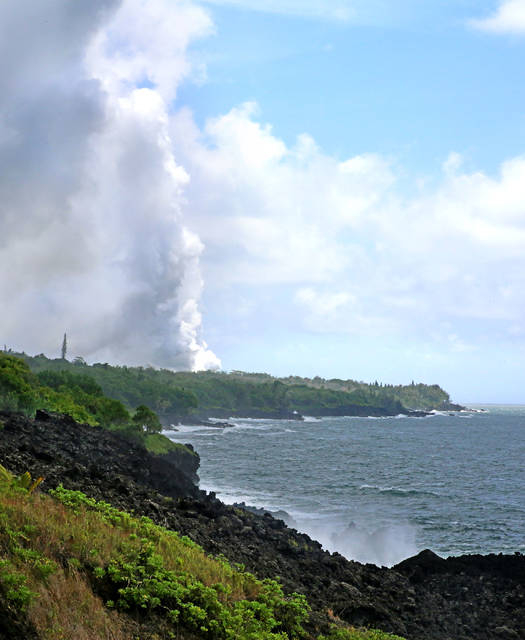
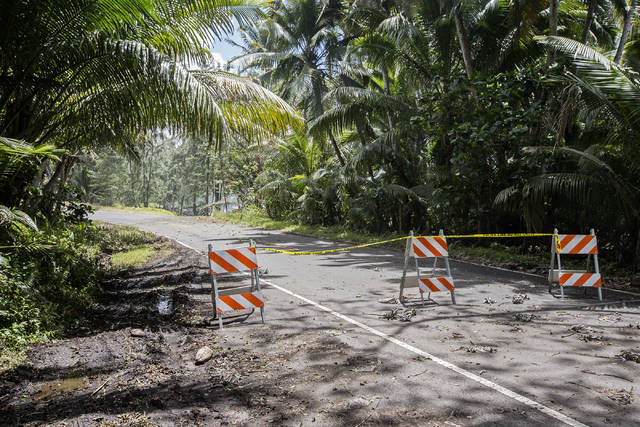
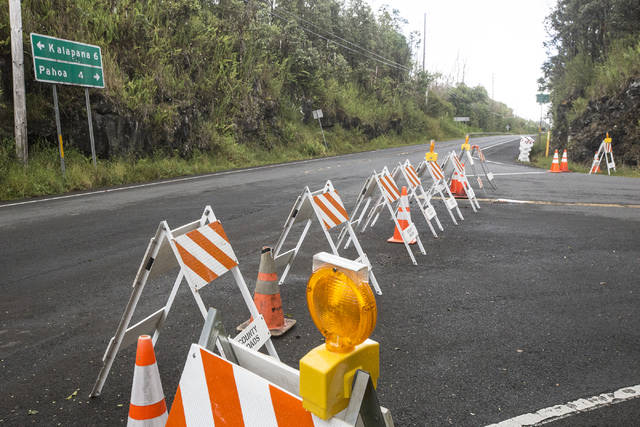
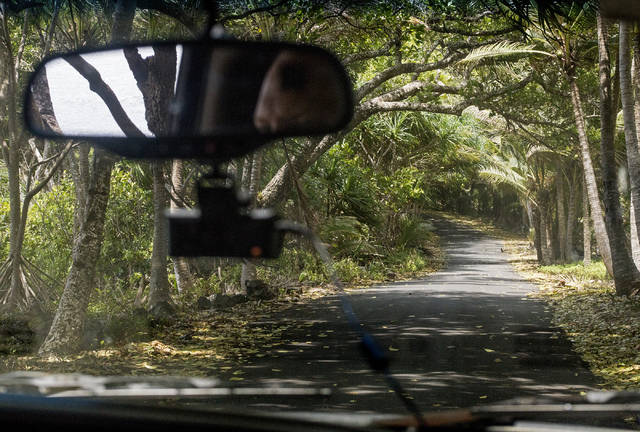
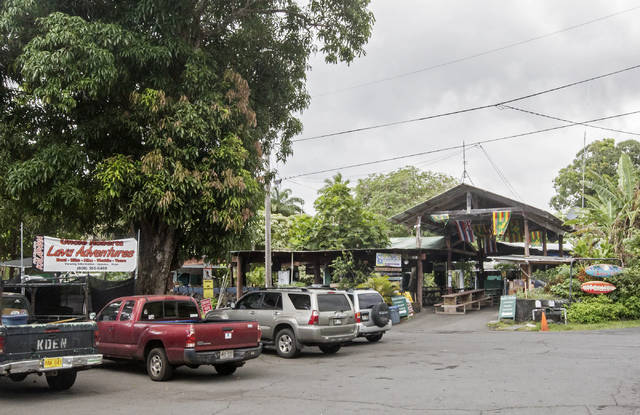
KALAPANA — The postman doesn’t come around here anymore and neither do the garbage trucks.
KALAPANA — The postman doesn’t come around here anymore and neither do the garbage trucks.
For those who live from Opihikao to Kalapana and have chosen to stay, isolation due to the ongoing lower Puna eruption remains a possibility if lava severs Highway 130, already compromised by steaming ground cracks. But it’s also one that is slowly becoming reality through the loss of services and many of their neighbors who have left for safer ground or cleaner air.
Yet few of these die-hards, a mix of Native Hawaiians with ancestral ties to the area and mainland transplants who admire their resilience to a changing landscape, seemed terribly worried Friday.
“Where am I going to go?” asked a resident of Kalapana Seaview Estates who gave his name as “Tilo.”
“Anywhere you go on the mainland there are hazards we all live with,” he added. “It’s a matter of managing them.”
It’s not clear how many people still reside here. More than 3,000 lived from Kapoho to Kalapana before the eruption, a number that includes Leilani Estates and Lanipuna Gardens, the epicenter of the eruption on Kilauea’s East Rift Zone. About 2,000 have been displaced from those subdivisions since the first fissure opened May 3.
Civil Defense officials have warned that those on the west side of the flow could become isolated, and lava already has covered Highway 137 along the coast, leaving Highway 130 as the only escape route, at least for now.
Hawaii County Civil Defense Administrator Talmadge Magno said he expects some will want to stay and officials haven’t forced anyone to leave, even in “mandatory” evacuation areas.
State and federal officials also are planning to reopen Chain of Craters Road, partially covered by lava rock to the west, only for evacuations.
Metal plates cover Highway 130 where cracks formed weeks ago along the rift zone.
Aaron Mitchell, a Puna resident who lost his home in Lanipuna Gardens but rents a place near Kehena for the time being, a mile or more from the ocean entry, now drives that fairly regularly. Only residents are allowed through a checkpoint manned by county police and the Hawaii National Guard.
He rolls up his windows and turns on the air conditioning as he drives over the plates at a brisk 55 mph so he doesn’t inhale any volcanic gas or get stuck at the wrong place at the wrong time. Plate temperatures have reached up to 130 degrees due to magma flowing underground.
Wendy Stovall, a U.S. Geological Survey volcanologist, said in an email Saturday that there haven’t been any detectable levels of hydrogen sulfide being emitted from those cracks, though heat from the ground might be causing vegetation to release carbonyl sulfide, which drivers could smell. The presence of hydrogen sulfide could indicate magma is moving up through the water table.
Mitchell said he and his wife love Puna and don’t want to leave yet. Most of their important belongings, at least those they were able to retrieve before abandoning their home, are in storage, and much of their time is spent preparing their insurance claim.
“It’s a strange holding pattern,” he said.
If they have to leave again, Mitchell, 42, said they can do it quickly.
“We’re experts at bugging out now,” he added.
Tilo, a water catchment repairman, said he has backup electricity and enough water in his catchment tank to last another 1 1/2 months.
He disconnected his water tank from the rooftop to keep out “Pele’s hair” and other contaminates tossed in the air from the entry of lava into the ocean a couple of miles down the coast. That keeps it safe, but also limits his water supply.
Some days the air quality can be poor for this community located downwind from the eruption site, and he noted he wore a mask for six hours one day because he could smell gas.
Tilo estimated 90 percent of residents of the subdivision, the largest in the area and built on top of a 1955 lava flow, have left.
He said he would leave if an evacuation became mandatory and would expect the large grass area at the makai side of the subdivision would be a good place for a helicopter to land.
Two U.S. Marine Corps helicopters are stationed at Hilo International Airport until today, along with a crew of 17 Marines, in case of evacuations.
Their mission could be extended, according to Maj. Jeff Hickman of the Hawaii National Guard, who said there are other helicopters, including three HH-60 Pave Hawks, that are available in Hilo.
Mitchell stopped his truck Friday to speak with two National Guard soldiers who were driving on Highway 137 in what appeared to be a rented Jeep with a gas detector on the hood.
They told him that one helicopter landing site would be south of Kehena Beach. He said he feels a lot more safe knowing they are patrolling the area and taking gas readings.
Mitchell shares the road with few people these days as the area feels more and more like a ghost town.
He points to the tree tunnels that remain where branches stretch over the coastal road and wanders if they will soon be gone.
Alongside the highway, known by some as “Red Road,” vacation rentals sit empty and some half-built homes are abandoned.
He still takes time to stop his truck to pick up a garbage lid blowing across the road, worried it will fall into the ocean, and gives a hitchhiker a ride to Kehena Beach, which is now often empty.
“Everyone is sticking together,” he said. “It makes you think we can get through this.”
Mitchell hopes to return to Lanipuna to build but expects that nearly every building there is gone.
“I’m still moving through the grieving process,” he said.
In Kalapana Seaview, Matthew Jamison was sitting on the grassy area watching the waves break on the rocky shoreline and patches of blue sky overhead. To the east, he could see a white plume from the ocean entry rise into the air.
He said air quality is best down there where the winds are strong.
“It’s the nature of the environment,” said Jamison, 62, regarding the eruption. He said he could always use an airlift if life there became too dangerous.
“You got to live through this,” the 25-year resident added. “I came here to live.
“I’m missing a leg but you don’t see me panicking.”
Not everyone there is a resident.
Jennie Theriault was walking with her young daughter around the entrance to the subdivision.
She said she is from Connecticut and was visiting in-laws who live in the neighborhood and were renewing their wedding vows. Theriault said they would be there for two weeks and it’s their first day.
“Absolutely not,” she said, when asked if she was worried. “If they stay, why not?”
“We’re all Army so I’m sure we have something,” Theriault said, regarding masks.
Kalapana residents have already lost a lot because of the volcano. In the 1980s and early ’90s, flows from the Pu‘u ‘O‘o vent destroyed several hundred homes and iconic black sand beaches.
A woman who gave her name as auntie Tootsie Peleiholani said she lost her home to lava in 1990. But she doesn’t blame Pele, the volcano goddess, which she said is undoing decades of poor land use decisions and overbuilding of vacation homes.
“It’s no longer about real estate and subdivisions,” Peleiholani said. “It’s about community and ohana.”
One property that was spared when much of Kalapana was inundated belonged to Robert Pookapu “Uncle Robert” Keliihoomalu Sr., who died in 2015. Uncle’s Awa Club, built at that site, has long been a popular gathering spot, and is a refuge for those who have stayed behind.
But the supplies aren’t from the county, state or Red Cross, which is managing evacuation shelters in Pahoa and Keaau.
Peleiholani pointed to packages of bottled water she said were donated by Puuhonua o Puna, a grassroots group formed by Puna resident Ikaika Marzo and others to provide aid.
She scolded a reporter for coming down there without bringing any supplies and expressed frustration about the National Guard and county officials showing up empty-handed.
“When you come to Kalapana, bring something,” she said.
Peleiholani said between 30 and 50 people will show up at night for food and camaraderie.
“I tell them to practice aloha,” she said. “This is your time.
“That’s what Pele is really about. She’s just rearranging the map.”
As for herself, Peleiholani said she doesn’t plan to leave and criticized officials because she doesn’t think they are asking enough about what they need down there to keep going.
“We don’t need militia,” she said, referring to the National Guard.
“We’ve done it before. That’s why Hawaiians survive.
“We’ll leave in our time in our own way.”
Email Tom Callis at tcallis@hawaiitribune-herald.com.



“built on top of a 1955 lava flow”
Which apparently didn’t impress the builders of these houses? That they were building houses in a lava freeway?